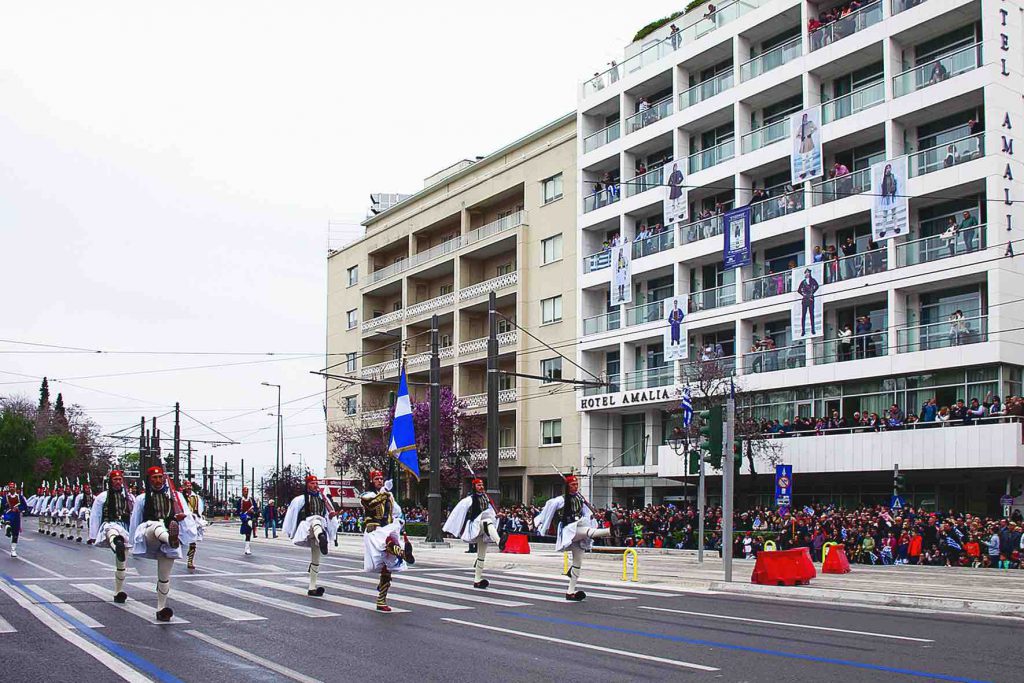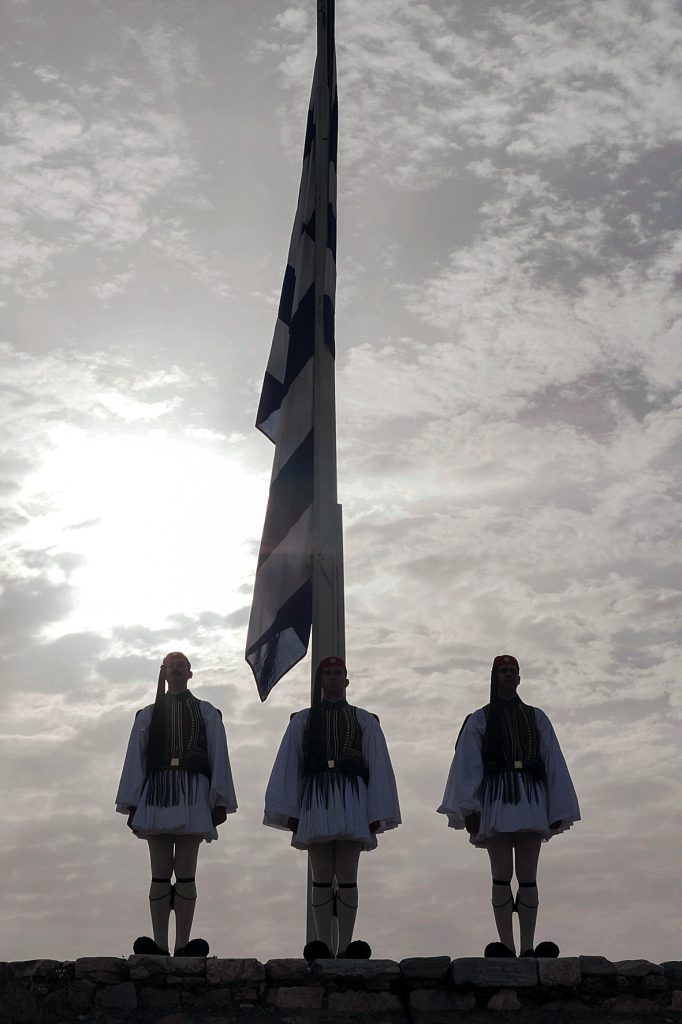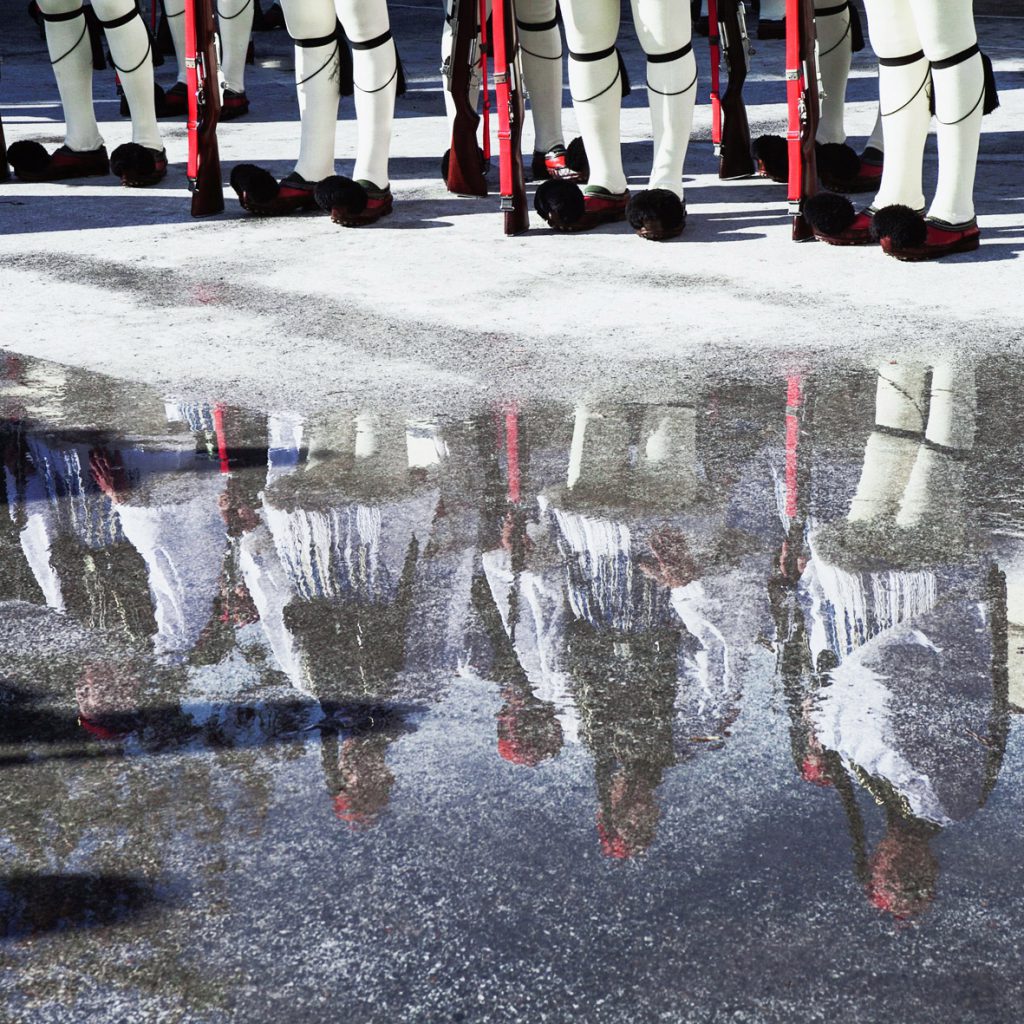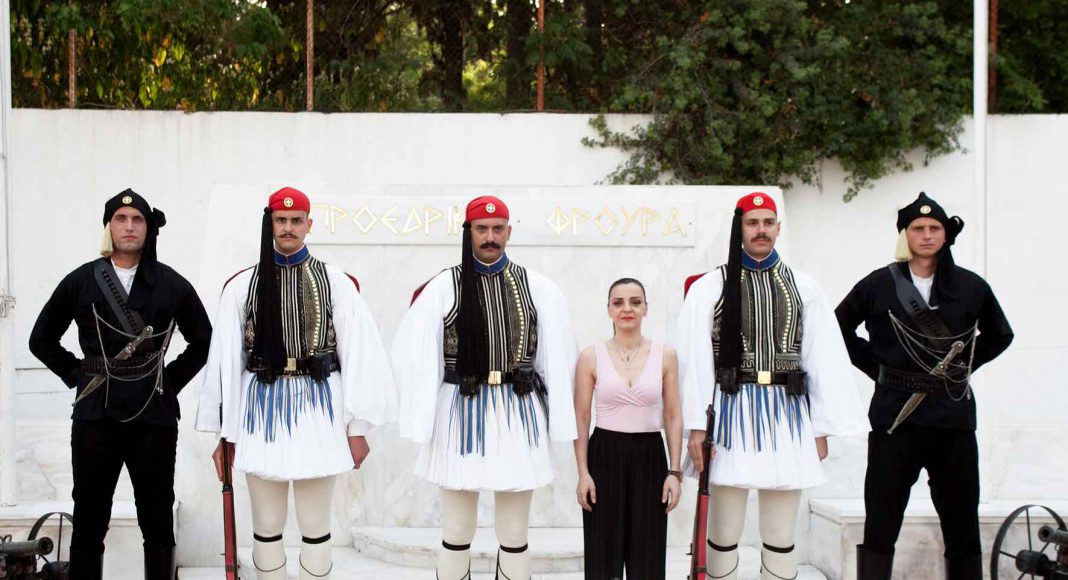By Panagiotis Dalatariof
Evzones – the soldiers of the Presidential Guard whose duty it is to stand guard at the Tomb of the Unknown Soldier 24/7, 365 days a year. While ever-present at their posts, to most visitors they remain enigmatic.
Just a few weeks before her photography exhibition in Kastelorizo, for which The Greek Herald is a media partner, Dimitra Hatziadam, photographer of the Evzones, takes us inside the world of the Greek state’s living symbols.
How did your project of photographing the Evzones come about?
“My journey in photography started with some theoretical lessons that took place during my senior high school years. This was the stimulus. I had no influence from my family whatsoever, other than my natural curiosity for my father’s camera.
Later on, I attended some seminars in Thessaloniki and then came to Athens where I started working as a photographer.

I was covering official functions of the President of the Republic, such as visits by foreign heads of state and ambassadors, so there was visual contact [with the Evzones] for about three years. Then, after a separate project photographing a bishop putting on his ceremonial vestments, the idea was born of photographing how the Evzones put their iconic outfits and gear on.
As of May 19, 2013, I started photographing the evzones and that was the beginning of a long journey, during which I didn’t know what I would encounter.
The relationship was built very slowly, very cautiously – both on my part and theirs. And then they opened their arms, they began to see me as “one of ours”, and so they began sharing aspects of their experience. And that was the beginning of a magical journey, one where I discovered what it is to photograph a Greek symbol and to have the luxury of knowing them by their first names, when others see them as symbols – silent, motionless, as they should be”
During these years of photographing the Evzones, what has impressed you the most?
“Certainly there are many moments … Moments emotionally charged, especially inside the Presidential Guard where the Evzones change into their uniforms. People can only see the end result and not the preparation. But I’m there documenting everything and it’s a great honour for me to be there and share this experience with them.

However, bitter moments do exist as well. Like the one in 2015, during the Greek bailout referendum in Syntagma Square. Evzones are the only ones who can be around and guard the Tomb of the Unknown Soldier and this is something all Greeks know. However, on this day, I saw so many people ignoring the Evzones and stepping on the Tomb. I repeat, Greek people who did not respect their own soldiers of the Presidential Guard.
I can recall so many great moments…
Watching them parading in such a heavy uniform, in torrential rain, as if nothing is wrong and witnessing the respect they have for the symbols of Greece, and for their uniforms.
And there is a particularity with regards to their uniforms. It is not just a bespoke uniform. The retiring Evzone, who is leaving the Presidential Guard gives his uniform to a new recruit, together with the tsarouchia [clogs]. That means that each uniform and pair of tsarouchia already have already their own history.
Does being photographed by tourists make them feel like they are an exhibit or do they feel honoured?
“Evzones are so intensively trained, that nothing will trouble them when on duty. Even if their own mother stands next to them, they won’t react. They are renowned for their patience and persistence. They are happy to be photographed by tourists”
Are the photos of the Evzones a way to take Greece abroad and get people to know about this symbol of the Greek state?
“Yes, absolutely. Greeks of diaspora know of course and understand the importance of Evzones as a symbol of our culture and history but it would be great for Philhellenes worldwide to have the opportunity to learn more as well”
What is the most peculiar question someone has asked you about the Evzones?
“A lady asked me once what is the role of the nails in the soles of the ‘tsarouchia’.
So, I answered her ‘What would Greece be without the familiar sound of the Evzones’ tsarouchi? No matter where around the world Greeks live. When they hear this trademark sound, they can feel our culture, our Greece beating in their hearts again”

Tell us about your upcoming photo exhibition in Kastelorizo
“In February a Greek-Australian lady from Kastelorizo who heard about my work contacted me and we organised a photo exhibition about Evzones that will take place from 1-16/8/20. Apart from the six Evzones’ different uniforms there will be an audio element with the sound of tsarouchi.
My dream is to take this exhibition around the world, where there is Greek diaspora and I would love for the exhibition to visit USA and Australia”
I would like to thank The Greek Herald for being one of the main media partners and for showing love and support!”
The traditional uniform of the Evzones
-The red of the fario (fez) symbolizes the blood that was spilt during the fight for independence. And the long tassel represents the tears shed during the war.
-The fustanella is made up of 30m worth of fabric and once functioned as a form of armor. It has 400 pleats, one for every year of the Ottoman occupation and in front the white and the blue represent the Greek flag.

-The waistcoat, which is an unwieldy garment, is also full of symbolism. On its back it has folk and religious symbols – the alpha and omega are embroidered, representing Christ, there are crosses, and it also has a symbol representing infinity. It is all handmade, and each one takes about 6 months to make.
-Each pair of tsarouchia weighs 3.5 kilos, each one has about 60 nails in the sole – these helped give the fighters traction on rough terrain. The pompom in front – during campaigns this supposedly kept the foot warm, and it was said that the Evzones hid sharp objects in them in order to use against the enemy.
*The Kastelorizo ‘Evzones’ photo exhibition is supported by The Greek Ministry of Foreign Affairs
Follow Dimitra Hatziadam on Facebook and Instagram: https://www.instagram.com/dimitra_hatziadam/

